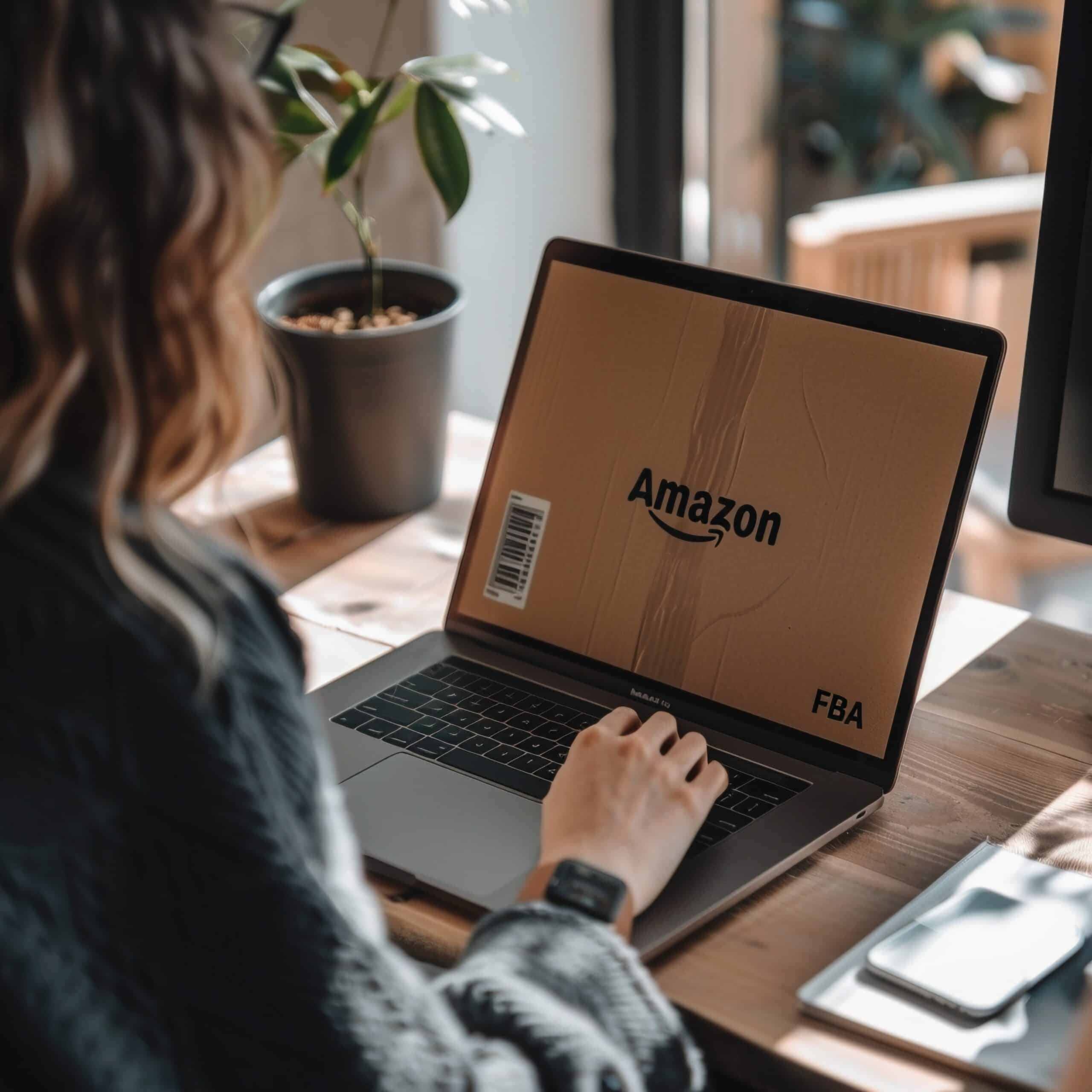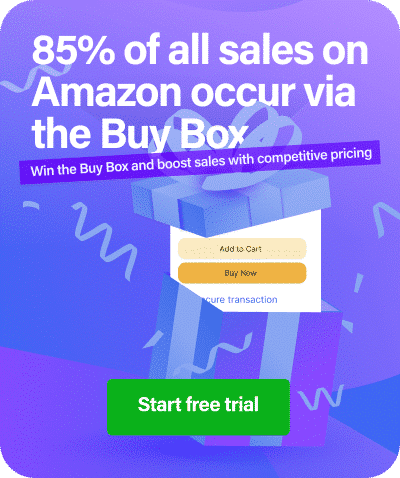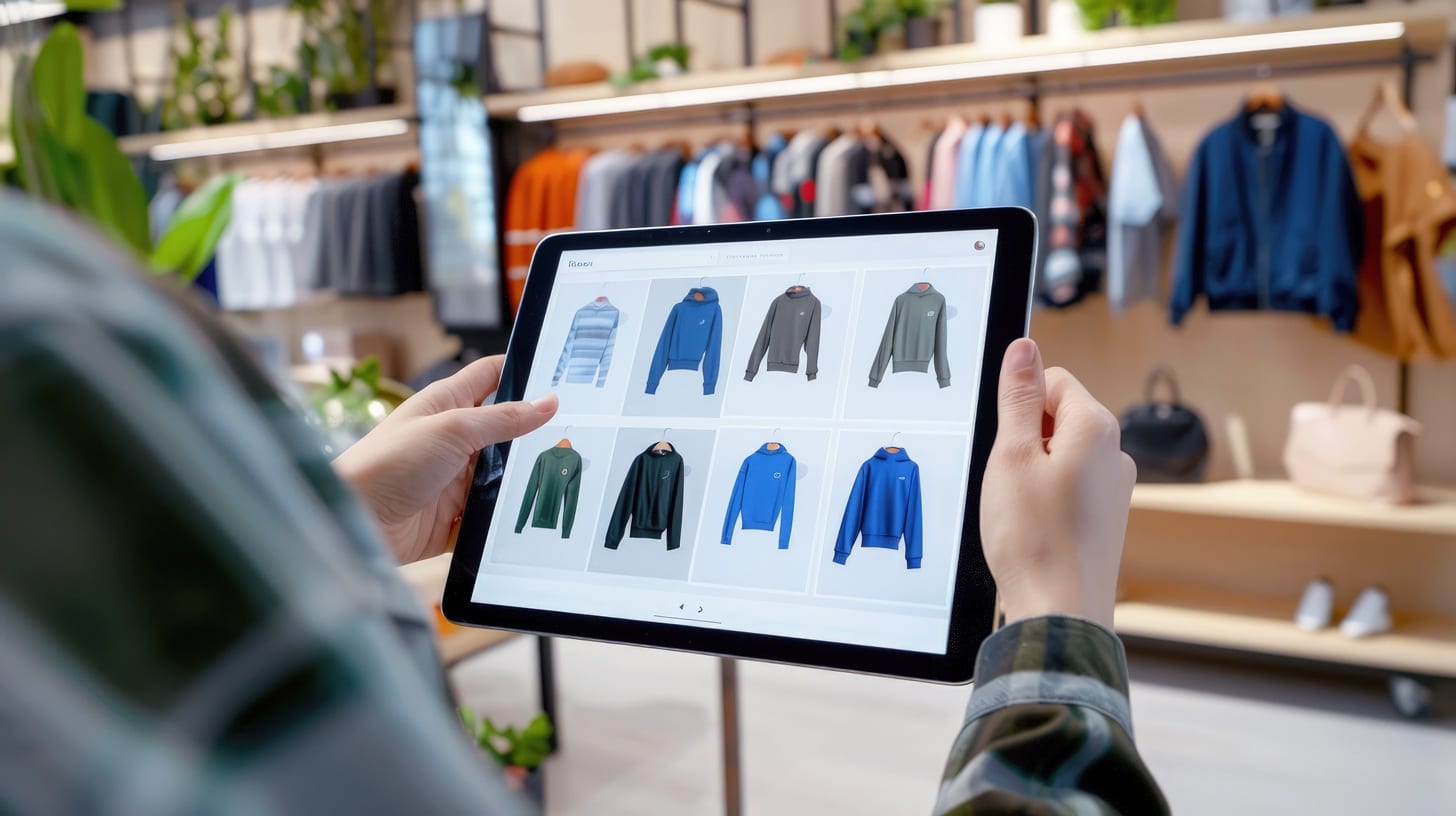Repricing software isn’t just for resellers—it’s a must-have for Amazon FBA private label and wholesale sellers in 2025. This guide explains how repricers help you stay competitive, protect margins, and win more Buy Box time. Discover the best tools, strategies, and automations for scaling your brand or catalog faster and smarter.
Understanding Amazon FBA Repricers: Beyond the Reseller Myth
An Amazon FBA repricer is sophisticated software that automatically adjusts your product prices based on market conditions, competitor movements, and your strategic goals. While many sellers associate repricing tools exclusively with retail arbitrage or online arbitrage operations, this perception couldn’t be further from reality in 2025.
The common misconception that repricers are only for resellers stems from outdated marketplace dynamics. Today’s Amazon landscape is far more complex. Private label brands face unauthorized sellers, wholesale distributors compete against multiple authorized partners, and even established brands must respond to algorithmic Buy Box changes in real-time. Manual pricing simply cannot keep pace with the speed and scale of modern Amazon competition.
For FBA sellers specifically, repricing becomes even more critical because Fulfillment by Amazon creates a level playing field where multiple sellers can compete for the same Buy Box on identical products. Whether you’re protecting your brand’s pricing integrity or maximizing volume across hundreds of wholesale ASINs, understanding the pros and cons of Amazon FBA helps you leverage an intelligent repricer as a non-negotiable tool for serious growth in 2025.
Why Repricing Matters for FBA Sellers
The Buy Box is the gateway to sales velocity on Amazon. Statistics consistently show that 82-90% of all Amazon sales occur through the Buy Box, making ownership of this prime real estate the difference between thriving and barely surviving on the platform. For FBA sellers, the Buy Box algorithm weighs factors including price, fulfillment method, seller performance, and inventory availability—all variables that shift constantly throughout the day.
Dynamic competition creates an environment where your pricing position can change within minutes. A wholesale distributor might lower their price to clear inventory. An unauthorized reseller could undercut your MAP pricing. A competitor might test aggressive pricing during peak traffic hours. Without automated repricing, you’re essentially bringing manual labor to a machine-learning fight.
The true power of repricing software lies in its ability to make intelligent adjustments 24/7 without human intervention. While you sleep, travel, or focus on sourcing and operations, your repricer monitors competitor prices, evaluates your strategic rules, and adjusts pricing to maximize either Buy Box percentage, profit margins, or a balanced combination of both. This automation doesn’t just save time—it captures sales opportunities that manual pricing would inevitably miss during off-hours or high-velocity market shifts. Learn more about winning the Amazon Buy Box in 2025 with proven strategies.
Private Label Use Case: Brand Control with Dynamic Pricing
Private label sellers face a unique challenge that makes repricing absolutely essential: protecting brand value while remaining competitive in a crowded marketplace. You’ve invested significantly in product development, branding, photography, and listing optimization. The last thing you want is to engage in a race-to-the-bottom pricing war that erodes both your margins and your brand’s perceived value.
Strategic repricing for private label brands focuses on maintaining pricing integrity while defending against market threats. Modern repricers offer MAP (Minimum Advertised Price) monitoring and enforcement features that automatically detect when your pricing approaches dangerous territory. You can set floor prices that protect profitability while allowing the system to compete dynamically within your acceptable range.
Consider this scenario: You’ve built a successful private label kitchen gadget brand with a retail price of $34.99. Suddenly, an unauthorized seller appears at $29.99, capturing your Buy Box and eroding sales. A sophisticated repricer can automatically adjust your price to $29.95—just enough to reclaim the Buy Box—while simultaneously alerting you to the unauthorized seller issue. Meanwhile, your system maintains guardrails preventing any price from dropping below your $27.00 minimum profitable threshold.
Beyond unauthorized sellers, private label brands also benefit from repricing when competing against similar products in the same niche. Your repricer can monitor 5-10 competitive ASINs and adjust your pricing to maintain a competitive advantage during promotional periods, seasonal demand shifts, or when new competitors enter your space. This allows you to stay aggressive during high-volume periods while pulling back during slower seasons to preserve margin.
Repricer.com specifically addresses private label challenges with intelligent rule-based pricing that respects your brand positioning while defending market share. The platform’s customizable floor and ceiling prices ensure you never compromise profitability, even during aggressive competitive periods. For advanced brand protection, explore cross-ASIN repricing strategies for private label sellers to compete effectively across your product ecosystem.
Wholesale Use Case: Competing Against Other Distributors
Wholesale FBA sellers often manage 50 to 500+ ASINs simultaneously, making manual price management mathematically impossible at scale. When you’re competing against other authorized distributors for the same branded products, the seller who maintains optimal pricing consistency wins more Buy Box time—and therefore more sales volume.
The wholesale repricing challenge differs significantly from private label. You don’t control the brand, you’re not protecting MAP on your own products, and you’re often competing against multiple sellers with access to similar or identical cost structures. Victory goes to whoever can maintain the most competitive pricing while preserving acceptable margins across hundreds of SKUs simultaneously.
Sophisticated repricers excel at this volume game through multi-ASIN automation that applies consistent logic across your entire catalog. You can segment products by margin profile, competition intensity, or inventory availability, then apply different repricing strategies to each segment. High-velocity ASINs might use aggressive Buy Box targeting, while slower-moving inventory employs margin-protection rules that prioritize profitability over velocity.
Inventory-aware pricing automation represents perhaps the most powerful wholesale repricing feature. Your software can automatically adjust pricing based on current stock levels—becoming more aggressive as inventory ages, pulling back when stock is low to preserve margin, and even pausing repricing entirely when items are out of stock to prevent lost Buy Box eligibility when you restock. This inventory intelligence transforms repricing from a simple price-matching tool into a comprehensive inventory management strategy. Discover how to integrate repricer inventory management for maximum profitability.
Repricer.com’s bulk management capabilities make it particularly effective for wholesale operations. You can upload hundreds of SKUs simultaneously, apply template-based rules to entire categories, and manage exceptions efficiently without drowning in ASIN-by-ASIN micromanagement. The platform’s real-time synchronization with Amazon Seller Central ensures your pricing decisions always reflect current inventory levels and competitive positioning. For sellers dealing with excess stock, implementing repricing strategies to clear inventory profitably can protect margins while maintaining velocity.
Key Features to Look For in an FBA Repricer
Selecting the right repricing software requires understanding which features actually impact your bottom line versus which are simply marketing differentiators. Start with FBA-aware logic that specifically targets Prime-eligible Buy Box positioning. Generic repricers designed for all marketplace models won’t optimize for the unique advantages that FBA provides in Amazon’s algorithm.
Minimum and maximum price guardrails form the foundation of safe automated repricing. Your software must allow ASIN-level price floors and ceilings that prevent unprofitable pricing decisions. The best systems allow percentage-based guardrails (never drop below 25% margin) or fixed-price rules ($19.99 minimum) with easy bulk-edit capabilities for managing large catalogs efficiently. Before setting these parameters, use the Amazon FBA calculator to understand your true costs and minimum profitable prices.
Rule-based repricing strategies offer transparent control where you explicitly define every pricing decision based on your business logic. Unlike opaque AI systems that make decisions without clear explanation, rule-based repricers let you understand exactly why prices change and maintain complete control over your pricing strategy. This transparency becomes critical when troubleshooting unexpected results or explaining pricing decisions to business partners or investors.
Multi-ASIN automation capabilities separate professional-grade repricers from basic tools. You need bulk SKU upload, template-based rule assignment, category-level defaults, and exception management for products requiring custom attention. Integration with inventory management tools, accounting software, and direct Seller Central API connections eliminates manual data transfer and ensures your repricing decisions reflect real-time inventory and performance data.
Repricer.com delivers all these essential features through an intuitive interface designed specifically for FBA sellers. The platform’s Amazon repricing software combines powerful automation with user-friendly controls, making it accessible to both repricing beginners and experienced Amazon sellers managing complex catalogs.
Best Amazon FBA Repricer Tools for 2025
The repricing software landscape has matured significantly, with specialized tools emerging for different seller profiles. Understanding which repricer aligns with your business model prevents costly trial-and-error with tools that weren’t designed for your specific needs.
| Tool | Rule-Based Control | Private Label Support | MAP Control | Best For |
| Repricer.com | ✅ | ✅ | ✅ | FBA sellers prioritizing transparent pricing control and brand protection |
| Seller Snap | Limited | ✅ | Limited | Multi-marketplace sellers needing advanced analytics |
| BQool | ✅ | ✅ | ✅ | Budget-conscious sellers with basic repricing needs |
Repricer.com stands out as the premier choice for FBA sellers who demand both powerful automation and complete strategic control. The platform’s rule-based approach means you always understand exactly why prices change, with no black-box AI making mysterious decisions that could damage your margins or brand positioning. This transparency proves invaluable for private label brands protecting hard-earned reputations and wholesale sellers managing tight margin profiles across large catalogs.
The platform excels in several critical areas that directly impact FBA profitability. MAP monitoring capabilities automatically alert you when prices approach dangerous territory, protecting brand relationships and avoiding costly violations. Customizable repricing schedules let you adjust pricing aggressively during peak traffic hours while maintaining stable pricing during slower periods. Competitor-specific rules allow you to respond differently to various types of competitors—matching aggressive resellers while maintaining premium positioning against lower-quality alternatives.
For private label sellers specifically, Repricer.com’s unauthorized seller detection helps you identify when new competitors appear on your listings, triggering immediate alerts and optional automatic price responses. The system’s velocity controls prevent rapid price fluctuations that could confuse customers or signal desperation, maintaining your brand’s premium perception even during competitive battles. Understanding the Buy Box beyond just sales helps optimize for both margins and velocity.
Wholesale sellers benefit from Repricer.com’s exceptional bulk management tools that make managing 200+ ASINs as straightforward as managing 20. Template-based pricing strategies apply consistent logic across product categories while allowing ASIN-level exceptions for high-value or margin-sensitive products. The platform’s inventory synchronization ensures pricing strategies adapt automatically as stock levels change, becoming more aggressive with aging inventory while protecting margin on fast-moving bestsellers.
Seller Snap serves sellers prioritizing multi-marketplace expansion and advanced analytics over pure Amazon FBA optimization. Their platform provides robust reporting but with less transparency in rule-based control compared to Repricer.com’s straightforward logic system. According to Jungle Scout’s 2024 seller research, sellers using automated repricing tools see an average 23% increase in Buy Box share within the first quarter.
BQool offers basic repricing functionality at budget-friendly pricing, suitable for newer sellers or those with simple catalogs not requiring sophisticated automation. However, the platform lacks many advanced features that growing FBA businesses eventually require as they scale.
When evaluating any repricing tool, take advantage of free trials to test performance with your actual catalog. Pay particular attention to how quickly prices update (some systems lag 15-30 minutes behind market changes), how intuitive bulk editing feels with your SKU volume, and whether customer support responds knowledgeably when you encounter edge cases.
Ready to experience transparent, powerful repricing designed specifically for FBA success? Start your free 14-day trial with Repricer.com and discover why thousands of private label and wholesale sellers trust the platform to protect margins while maximizing Buy Box performance.
Setting Up an FBA Repricing Strategy
Successful repricing begins with strategic planning before you ever connect your Seller Central account or upload your first SKU. Start by segmenting your catalog into pricing tiers based on margin profile, competition intensity, and strategic importance. Your top 20% revenue-generating ASINs likely deserve custom rules, while the remaining 80% can operate under category-level defaults with exception alerts.
Floor pricing establishes your non-negotiable minimum across all products. Calculate your landed cost per unit (product cost + shipping + FBA fees + returns allowance) and add your absolute minimum acceptable margin. This becomes your global floor—the price below which your repricer should never venture regardless of competitive pressure. Most successful FBA sellers set floors at 15-25% gross margin depending on their cost structure and category dynamics.
Logic rules define how your repricer responds to specific market conditions. A basic wholesale strategy might say: “If I have the Buy Box, increase price by $0.25 every 6 hours until I lose it or hit my maximum price. If I lose the Buy Box, match the lowest FBA competitor minus $0.01.” A private label approach might instead say: “Maintain price at $34.99 unless an unauthorized seller appears below $32.00, then match their price minus $0.01 until I reclaim the Buy Box, but never drop below $29.99 floor.”
Repricer.com simplifies this setup process through intuitive rule templates designed for common FBA scenarios. Rather than building complex logic from scratch, you can select pre-configured strategies for private label defense, wholesale Buy Box optimization, or inventory clearance, then customize parameters to match your specific margin requirements and competitive landscape. For comprehensive guidance, review these 10 Amazon repricing strategies for FBA sellers.
Syncing your ASINs requires more than bulk uploads—you need ongoing maintenance as you add new products, discontinue old ones, or adjust strategies based on performance data. Establish a weekly audit process where you review Buy Box percentage by ASIN, identify products consistently hitting floor prices (potential margin problems), and flag SKUs that haven’t repriced recently (potential software sync issues).
The repricing workflow should flow seamlessly: New products get assigned to appropriate segments based on predefined criteria → Segment rules automatically apply → System monitors and adjusts prices continuously → Alerts notify you of unusual patterns → You review performance weekly and adjust segment rules quarterly based on accumulated data. This systematic approach prevents the chaos of ad-hoc pricing decisions while maintaining strategic control over your most important margin drivers.
Tips for Success: Maximizing Your Repricing Performance
Test new logic sets on small product segments before rolling them out catalog-wide. Select 10-15 ASINs representative of a category, apply your experimental rules, and monitor for 7-14 days before expanding. This limited-risk testing prevents catastrophic margin losses from overly aggressive rules or missed edge cases in your logic. Document both successful and failed experiments to build institutional knowledge about what works in your specific niche.
Monitor Buy Box percentage weekly as your primary repricing KPI. Most repricers provide historical Buy Box ownership data showing what percentage of time you held the Buy Box for each ASIN. Track trending—are you gaining or losing Buy Box share over time? Products consistently showing low Buy Box percentage despite competitive pricing may signal deeper issues with seller feedback, fulfillment speed, or product quality that repricing cannot overcome. Learn how to measure repricing success with key metrics beyond just Buy Box wins.
Repricer.com’s dashboard makes this monitoring effortless with visual Buy Box tracking that highlights trends at a glance. You can quickly identify which ASINs are performing exceptionally well, which require strategy adjustments, and which face competitive challenges beyond pricing alone. The platform’s Buy Box Threshold feature has helped sellers boost win rates by 5-10% through intelligent pricing optimization.
Use alerts strategically to catch MAP violations, unexpected price drops, or competitive anomalies requiring human judgment. Set up notifications for: Any price approaching within $1.00 of your floor, any ASIN losing Buy Box for more than 48 consecutive hours, any competitor dropping price more than 15% in a single day, and any unauthorized sellers appearing on your private label ASINs. Smart alerts keep you informed without drowning you in notification noise.
Seasonal strategy adjustments separate sophisticated sellers from amateurs. Q4 holiday pricing should look dramatically different from Q2 slow season pricing for most categories. Build seasonal rule sets in advance, then toggle between them based on calendar triggers or inventory position. High-demand periods might justify more aggressive floor pricing to capture volume, while slow seasons benefit from margin protection even at the cost of reduced sales velocity. Apply proven eCommerce pricing strategies to maximize profitability year-round.
Competitive intelligence matters beyond just matching prices. Regularly analyze which competitors consistently win the Buy Box in your niche and study their pricing patterns. Do they become more aggressive during specific days of the week? Do they employ time-based pricing that adjusts throughout the day? Do they respond quickly to your price changes or update on scheduled intervals? Understanding competitive behavior helps you anticipate moves rather than just react to them. According to McKinsey’s pricing research, companies that regularly optimize pricing see 2-7% revenue improvements and 1-3% margin gains annually.
Conclusion: FBA Repricers as Growth Leverage
Repricing software represents one of the highest-ROI investments available to serious Amazon FBA sellers in 2025. Whether you’re protecting a private label brand against unauthorized sellers or managing hundreds of wholesale ASINs across multiple distributors, automated repricing eliminates the impossible task of manual price management while capturing sales opportunities that would otherwise slip away during the 16+ hours daily when you’re not actively monitoring your account.
The distinction between private label and wholesale use cases matters because strategy follows structure. Private label sellers prioritize brand protection, MAP enforcement, and strategic positioning against similar competing products. Wholesale operators focus on volume optimization, margin preservation across large catalogs, and winning Buy Box time against other authorized distributors. Both benefit enormously from repricing automation, but the specific features and strategies differ significantly.
The investment in repricing software typically pays for itself within the first 30-60 days through a combination of increased Buy Box time (more sales), reduced manual labor (time savings), and fewer pricing errors (margin protection). As your catalog grows from dozens to hundreds of ASINs, the ROI multiplies because repricing software scales effortlessly while human attention does not. Understanding the difference between manual vs automated repricing highlights why automation has become essential for competitive sellers.
Repricer.com delivers this growth leverage through a platform specifically designed for FBA sellers who refuse to compromise between automation and control. The transparent rule-based system ensures you always understand your pricing strategy, while powerful bulk management tools scale effortlessly from small catalogs to enterprise-level operations. Whether you’re launching your first private label product or managing a complex wholesale distribution network, Repricer.com provides the automation infrastructure that serious sellers require.
Ready to implement automated repricing for your FBA business? Start by auditing your current pricing process to identify which ASINs consume the most manual time, then calculate your potential Buy Box improvement opportunity. Most sellers discover they’re leaving 15-30% additional sales on the table through suboptimal pricing timing alone—revenue that automated repricing captures automatically.
Start your free 14-day trial with Repricer.com and experience firsthand how transparent, powerful repricing transforms FBA profitability. No credit card required, full feature access, and dedicated support to help you optimize your strategy from day one. Explore additional Amazon seller tools for success in 2025 to complement your repricing strategy.
Private label brands should also investigate best practices for maintaining brand integrity while staying competitive in dynamic markets. For sellers managing inventory challenges, implementing strategic inventory storage cost controls alongside automated repricing creates a comprehensive profit optimization system.
The Amazon marketplace becomes more competitive and algorithmic each year. Sellers who embrace intelligent automation through professional repricing tools position themselves for sustainable growth, while those clinging to manual processes face an increasingly impossible task. The question isn’t whether to implement repricing—it’s how quickly you can deploy a proven solution like Repricer.com to capture the Buy Box opportunities your competitors are already exploiting.
FAQs
What’s the difference between FBA and FBM repricing?
FBA repricing focuses specifically on winning the Prime-eligible Buy Box, which receives preferential treatment in Amazon’s algorithm and customer shopping experience. FBA repricers optimize for the unique advantages that Fulfillment by Amazon provides, including faster delivery times, Prime badge benefits, and higher default algorithm weighting. FBM (Fulfilled by Merchant) repricing must account for longer shipping times, varied fulfillment performance, and generally requires more aggressive pricing to overcome the FBA advantage. Repricer.com handles both fulfillment methods, but the optimal strategies differ significantly based on whether you’re leveraging FBA’s algorithmic advantages or competing as an FBM seller. Learn more about leveraging Amazon repricing automation for both models.
Can private label brands use repricers effectively?
Absolutely. Private label brands benefit enormously from repricing when facing unauthorized sellers, competing against similar products in crowded niches, or managing multiple product variations with different competitive landscapes. The key is using MAP monitoring, strict floor pricing, and brand-protection features that prevent race-to-the-bottom pricing. Repricer.com specifically addresses private label challenges with customizable rules that respect your brand positioning while defending market share against both direct counterfeiters and adjacent competitors. The platform’s unauthorized seller alerts and velocity controls help maintain premium brand perception even during competitive battles. Explore comprehensive strategies in our Amazon private label definitive guide.
How do I protect MAP while using a repricer?
MAP (Minimum Advertised Price) protection requires setting absolute floor prices at or above your MAP threshold and configuring alerts that notify you when competitive pressure pushes pricing toward MAP boundaries. Repricer.com includes MAP monitoring features that track both your pricing and competitor pricing across your brand catalog, flagging violations automatically before they damage manufacturer relationships. For authorized distributors of other brands, ensure your repricing rules respect manufacturer MAP policies by setting appropriate floors and never programming automatic price reductions below MAP, even in response to competitor violations. The platform’s transparent rule system makes MAP compliance straightforward to implement and verify.
Which repricer is best for wholesale sellers?
Wholesale sellers typically prioritize multi-ASIN automation, inventory-aware pricing, and efficient bulk management over complex AI systems. Repricer.com excels for wholesale operations due to its powerful template-based rules that apply consistent logic across hundreds of ASINs simultaneously, combined with ASIN-level exception handling for products requiring custom attention. The platform’s real-time Seller Central synchronization ensures your pricing always reflects current inventory levels, becoming more aggressive with aging stock while protecting margins on fast-moving items. For wholesale catalogs ranging from 50 to 500+ ASINs, Repricer.com provides the perfect balance of automation power and strategic control without overwhelming complexity or opaque AI decision-making.
Will a repricer increase my Buy Box percentage?
In most cases, yes—often dramatically. Repricers increase Buy Box percentage by responding to competitive price changes within minutes rather than hours or days, maintaining optimal pricing 24/7 including nights and weekends, and making micro-adjustments that humans would never catch. Most sellers using Repricer.com see 15-40% Buy Box improvement within the first 30 days, with results varying based on competitiveness of your niche, quality of your repricing strategy, and your baseline Buy Box percentage before implementing automation. However, repricing cannot overcome poor seller metrics, inventory stockouts, or fulfillment problems that legitimately hurt your Buy Box eligibility in Amazon’s algorithm. The platform’s transparent reporting helps you distinguish between pricing-related Buy Box losses and performance issues requiring different solutions. Research from Amazon’s Seller University confirms that automated pricing is a key factor in maintaining competitive Buy Box share.





